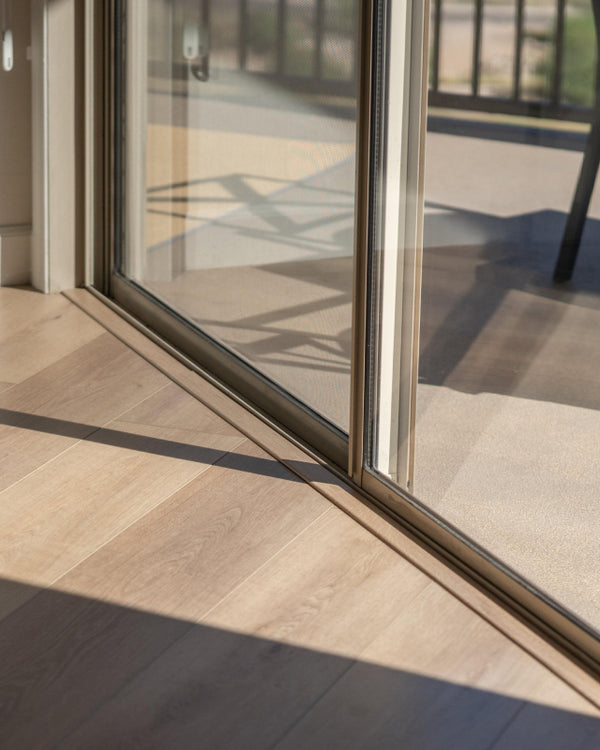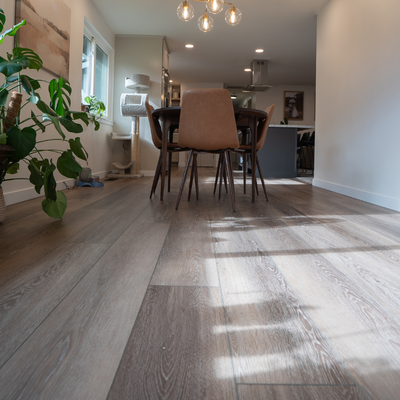Old homes certainly have their charm, but if you live in a home built before 1980, you may be concerned about the presence of asbestos in your flooring. Asbestos, once a common material used in construction for its durability and fire-resistant properties, is now known for its serious health risks. However, the prospect of removing asbestos can be daunting due to the high costs and potential hazards involved. Thankfully, there is a safe and cost-effective alternative: covering your old flooring with new flooring.
Understanding Asbestos in Flooring
Asbestos was widely used in building materials, including floor tiles, vinyl flooring, and adhesives, from the 1920s to the 1980s. When asbestos-containing materials (ACMs) are disturbed, they can release fibers into the air, which, when inhaled, can lead to serious respiratory diseases, including lung cancer and mesothelioma. However, asbestos poses little risk if it remains undisturbed and intact.
The Risks of Asbestos Removal
Removing asbestos flooring can be expensive and hazardous. The process requires specialized equipment, protective clothing, and professional expertise to prevent the release of asbestos fibers into the air. Improper removal can exacerbate the problem, increasing the risk of exposure.
According to the Environmental Protection Agency (EPA), "removing asbestos can create a greater health risk than leaving it undisturbed" because of the potential for fiber release during removal . Therefore, asbestos removal should only be carried out by licensed professionals.

Covering Old Flooring: A Safe Alternative
Instead of removing asbestos-containing flooring, you can safely encapsulate it by covering it with new flooring. This method effectively seals the asbestos fibers, preventing them from becoming airborne. The EPA supports the encapsulation of asbestos as a safe method of handling ACMs, noting that it is often safer and less costly than removal. Using a product that you don't expect to need to replace again is your best bet. Flooret's Modin LVP is an excellent option if you're looking for something that offers a lifetime warranty and will last for years to come.

Benefits of Covering Asbestos-Containing Flooring
- Safety: By covering old flooring, you avoid disturbing the asbestos materials, thereby preventing the release of harmful fibers into the air.
- Cost-Effectiveness: Encapsulation is significantly less expensive than professional asbestos removal, which can be prohibitively costly for many homeowners.
- Minimal Disruption: Covering existing flooring is a straightforward process that causes minimal disruption to your home, unlike the extensive preparations and precautions required for asbestos removal.
How to Safely Cover Asbestos-Containing Flooring
- Choose the Right Flooring Material: Select new flooring that can be installed over existing flooring, such as laminate, vinyl, LVP, or carpet . These materials can be laid directly over asbestos-containing tiles or vinyl, provided the old flooring is in good condition and securely bonded to the subfloor.
- Prepare the Surface: Ensure the old flooring is clean, dry, and free of debris.
- Professional Installation: While DIY installation is possible, hiring a professional ensures that the job is done correctly and safely, adhering to any regulations and guidelines concerning asbestos.
Conclusion
Don’t fret - there are cost-effective and safe solutions out there. Covering old flooring that might contain asbestos with new flooring is a proven solution for homeowners. This method encapsulates the hazardous material, preventing exposure and providing a fresh, updated look to your home without the high costs and risks associated with asbestos removal. Always consider consulting with professionals to ensure the best practices are followed, keeping your home safe and beautiful.














